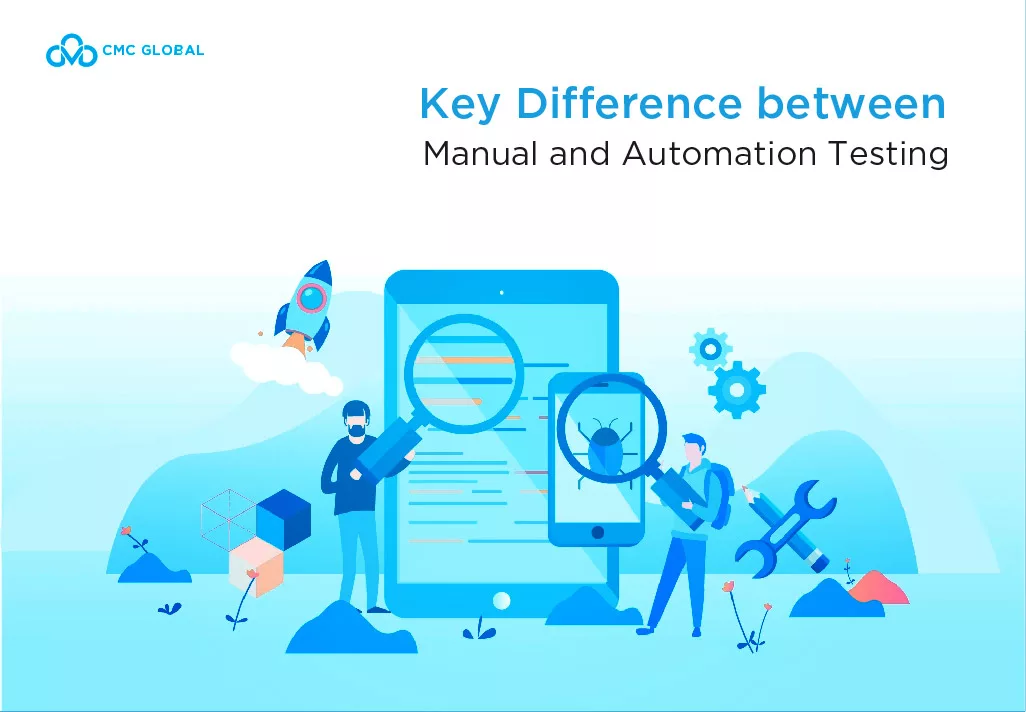Software testing is an essential part of the software development cycle. It finds and resolves errors before the finished application is handed over to the client, ensuring that there won’t be disruptions when the software comes into operation. Not all testing practices are created equal, and in this article, we will share with you the most commonly used software testing methods, what purposes they serve, as well as how you can decide when to use which. Let’s jump right into the details!
What Is Software Testing?

Software testing is the process of verifying that an application works as expected. This process consists of a series of well-defined activities that software testers carry out to find bugs or functionality errors.
Software testers use a combination of manual and automated testing tools to discover errors which are then reported to the development team for correction. Software testing is crucial before the launch of a software product because the end user doesn’t care about why an application doesn’t work; all they care about is whether it’s providing a great user experience.
Why Is Software Testing Important?
Software development is a complex activity that is prone to errors which often result from miscommunication or a lack of attention to detail. Thus it can rarely be successful without software testing. Software defects cause poor user experience and can damage a brand’s reputation. Although software testing costs money, such an amount is often too small compared with millions saved from lost revenues and customer support expenses.
Methodologies of Software Testing
In execution, software testing is classified into two primary methodologies: manual testing and automated testing.
Manual Testing
Manual testing is testing that is done by manually interacting with the application and its APIs (often via dedicated tools). This form of testing is often expensive as it requires human labor to set up a testing environment and carry out the test by hand.
Automated Testing
Automated testing, on the other hand, is conducted by an automated tool that executes a test script written beforehand by a software testing professional. Automated tests can vary hugely in complexity and difficulty, from testing a single feature to ensuring that a sequence of actions works as expected.
Automated testing is often more robust and reliable than manual testing due to the absence of human involvement, but the quality of an automated test depends largely on the quality of the test script.
Automated testing is a great way to scale up your QA process as you bring in new features to your application, and it also places a crucial role in continuous integration and continuous delivery. This, however, doesn’t mean manual testing has become obsolete since there are testing objectives that can only be achieved with manual testing. We’ll dive deeper into this topic later in this article.
Models of Software Testing
There are multiple methodologies used in software testing, whose goal is to ensure that applications can operate successfully in different environments and platforms. While software testers use different types of testing, these methods can be categorized into two main models: functional testing and non-functional testing.
Functional Testing
Functional testing involves testing an application against its business requirements. It uses test types that are designed to verify that each function of the application behaves as expected according to its use cases. Test types that are typically used in functional testing include:
- Unit testing
- Integration testing
- System testing
- Acceptance testing
Non-functional Testing
Non-functional testing focuses on the operational side of an application to make sure that it runs stably and securely. Test types commonly employed in non-functional testing include:
- Performance testing
- Security testing
- Usability testing
- Compatibility testing

Test Types of Software Testing
Unit Testing (Functional)
Unit testing is the first level of testing and is often conducted by developers at the code level. The purpose of unit testing is to make sure that the individual components of an application work as designed. Developers typically do unit testing before an application or feature is passed over to the tester team.
Although unit testing can be conducted manually, automation can speed up the delivery and expand test coverage. Unit testing also minimizes trouble that software testers later may need to deal with as errors found early take less time to correct than if they are discovered later in the testing stage.
Integration Testing (Functional)
Integration testing verifies an application not at the unit level but at the module level. In software development, a module is a group of units that are combined to perform a specific task.
After unit testing has verified individual units, integration testing tests the modules that these individual units create to verify that these different modules perform correctly the actions for which they are responsible. Integration tests are often framed by user scenarios, such as logging in or opening files.
System Testing (Functional)
System testing tests an application as a complete environment. In system testing, the functionality of an application is tested from end-to-end to ensure that user flows, from simple ones such as registering an account to more complex ones such as verifying email notifications, work as expected.
Acceptance Testing (Functional)
Acceptance testing is the final stage of functional testing. Its goal is to identify whether an application satisfies its business requirements. This test requires the application to be up and running as a complete system and focuses on replicating user behavior.

Performance Testing (Non-functional)
Performance testing is used to identify how an application performs under different loads. The goal is to test its availability and stability in real situations. For example, a performance test can put an application under a high number of requests to see how it performs.
Performance testing done on an application can be classified into four types:
- Load Testing. Test the application under increasing volumes of load to verify whether it can handle what it is designed to.
- Stress Testing. Overload the application to see how it responds at and beyond its peak load. Stress testing can help to find out at what point the application will break.
- Endurance Testing. Test the application under a specific load for a certain amount of time to understand how it performs under prolonged usage. One important goal of endurance testing is to identify memory leaks.
- Spike Testing. Serve the application with sudden bursts of requests to understand what will happen when the load suddenly increases drastically.
Read more: Differences between Load Testing and Performance Testing
Security Testing (Non-functional)
The goal of security testing is to determine if the information and data stored in an application is protected. This can be achieved by looking for loopholes and security risks in the system that can lead to unauthorized access or data leaks. Security can be performed in a variety of ways, but their objective is always to verify one of the six principles of security:\
- Integrity
- Confidentiality
- Authorization
- Authentication
- Availability
- Non-repudiation
Usability Testing (Non-functional)
Usability testing measures how user-friendly an application is from the end user’s perspective and is often conducted during the acceptance testing stage. The objective here is to identify whether the UX/UI and aesthetics of an application are suitable for its workflows and business purposes.
Compatibility Testing (Non-functional)
The purpose of compatibility testing is to determine how an application runs in different environments. It is done by putting the application in different operating systems, browsers, or resolution configurations to see whether it is compatible with these environments. You can rely on compatibility testing to make sure that your application is compatible with the environments in which your end users will use it.
Final Words
Testing plays an essential role in software development. Understanding what it is and how it is done will allow you to keep track of the development process of your application product, as well as identify in which aspects it will need to be verified.
If your company doesn’t have the expertise to execute your software development project in-house, it is best to find a service provider to help you.
CMC Global is among the top three IT outsourcing services providers in Vietnam. We operate a large certified team of developers, providing a wide variety of stacks, to help you build your application in the most cost-effective way and in the least amount of time.
For further information, fill in the contact form, and our team will get in touch shortly to advise!




